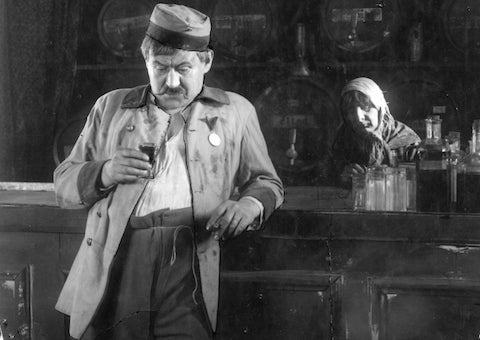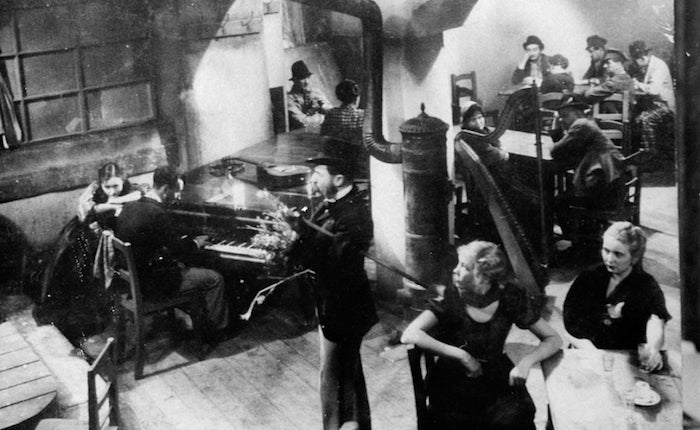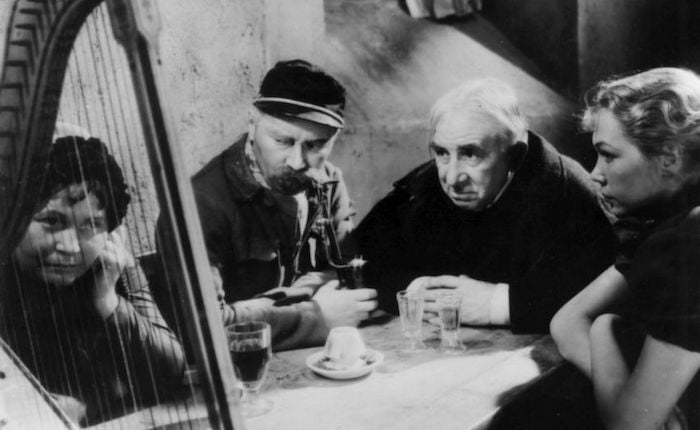
Batalion (dir. Přemysl Pražý, 1927)
In the 1960s, the Czech New Wave achieved international recognition, finding a small place in the world cinema canon. The rest of Czech film history has remained terra incognita, as far as anyone other than the Czechs themselves are concerned, and silent films from Prague are even less well known. However, the Czech example may have much to offer in understanding the development of national cinemas in the silent era, a topic thought dead in some quarters of academia. Given the interplay of language, history, art and cultural production within national cinemas, I believe there is still work to be done here. Furthermore, the Czech model of cultural autarchy complicates the widely held notion that virtually all national film productions, excepting Hollywood, needed an export market, in order to achieve financial stability.
Born in 1918 out of the embers of the Austro-Hungarian Empire, the first Czechoslovak Republic featured an American-style democratic constitution, a highly industrialized economy, and a strong middle class. In the 1920s, Czech film producers financed a significant number of films, which were directed solely at the domestic market, being produced cheaply enough to forgo foreign sales in their amortization plans. While some film reviewers complained repeatedly about the overuse of intertitles in Czech silents, domestic audiences loved reading Czech, because before 1918 titles by law had to be presented in German. Reading Czech intertitles thus became an act of cultural liberation.

Batalion (1927)
Czech silent cinema was therefore inextricably linked to nation-building and the creation of a budding national culture, affording historians a unique model of these interrelated cultural phenomena. Czech film production has always been small but consistent. In the 1920s, Prague based filmmakers were producing between 26 and 38 feature films per year, slightly more than were completed in the New Wave era; even today the Czechs are only producing around 20-22 films per year. Amazingly, approximately 80% of Czech silent film production has survived into the present (in contrast to 20% of U.S. films), including nearly 200 feature films. This offers silent film historians a unique opportunity to study a nearly complete national production.
One of the most commercially and critically successful films of the 1st Republic was Batalion, based on a novel and play by Josef Hais-Týnecký about the 19th-century Czech Socialist, Frantisek Uher, who befriended the Prague Lumpenproletariat congregating around the pub “Batalion.” Influenced by Soviet style editing and German expressionist lighting, Batalion presents a national mythology of the left, rather than the conservative, Catholic ideology of Svatý Václav (St. Wenceslas, 1930, Jan S. Kolar). Last year, the Czech National Film Archive released a DVD of Batalion (with English subtitles) and a score by Kryštof Mařatka. In April, MoMA programmed the film in their series, Ecstasy and Irony: Czech Cinema, 1927-1943.

Batalion (1927)
The film opens like a film noir: the well respected member of Parliament, František Uher, gun in hand, discovers his wife in bed with an officer. He kills them both, but only in his imagination. Broken, he instead, goes to the Batalion, where he will remain the rest of his life, an alcoholic wreck. Uher is played by Karel Hasler, a prolific political cabaret actor/director/composer, who was tortured to death in Mauthausen concentration camp in 1941. A slow dissolve marks the transition from citizen to barfly; here as elsewhere the film utilizes numerous highly visual avant-garde techniques to communicate both realism and atmosphere. The remainder of the film, then, is a group portrait of Prague’s working class in and around the famous pub: the husband who drinks his wages and beats his wife when she complains there is no food for the children; the homeless men and women at a public soup kitchen; the old women who monitor all activity on the street; the young woman who almost slips into prostitution, when a gentleman offers her new clothes; the worker dying of tuberculosis, because he can’t afford treatment in the mountains; the prostitute from the countryside who needs a residency permit for the city; the Austrian cops who patrol the nightly streets; outcasts and misfits all. In other words, the film is relentlessly dark, not just because most scenes occur at night in high key lighting, but in keeping with the Czech national character which tends towards the depressive, although there also moments of real humor.
Přemysl Pražý, the film’s director, had started his career on the stage, co-directing his first silent film, The Lady with the Small Foot in 1919. He continued working in theater and film in the 1920s, but it was Batalion that was immediately recognized as a masterpiece of the late silent period of social realism. With the NFA DVD release, this film will hopefully become better known among silent film lovers.
< Back to Archival Spaces blog






 Mobile Navigation
Mobile Navigation

